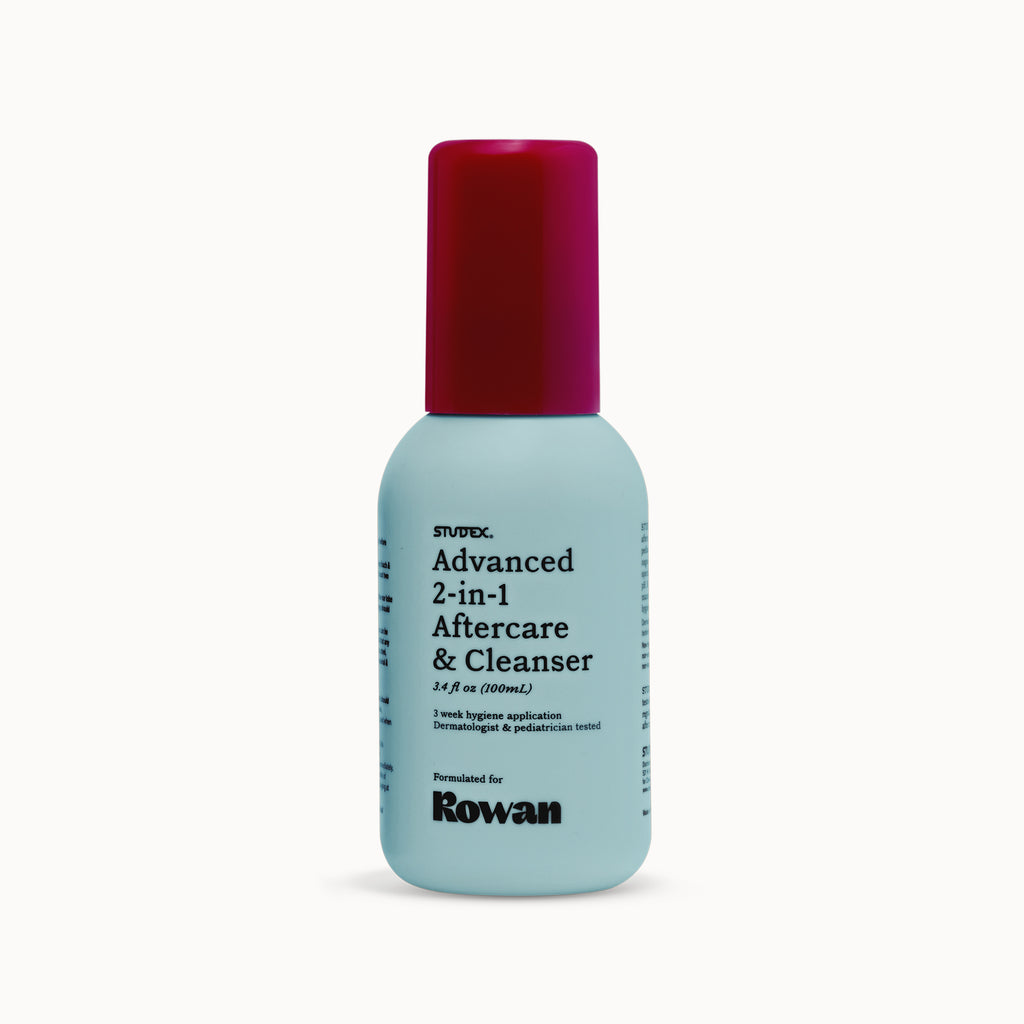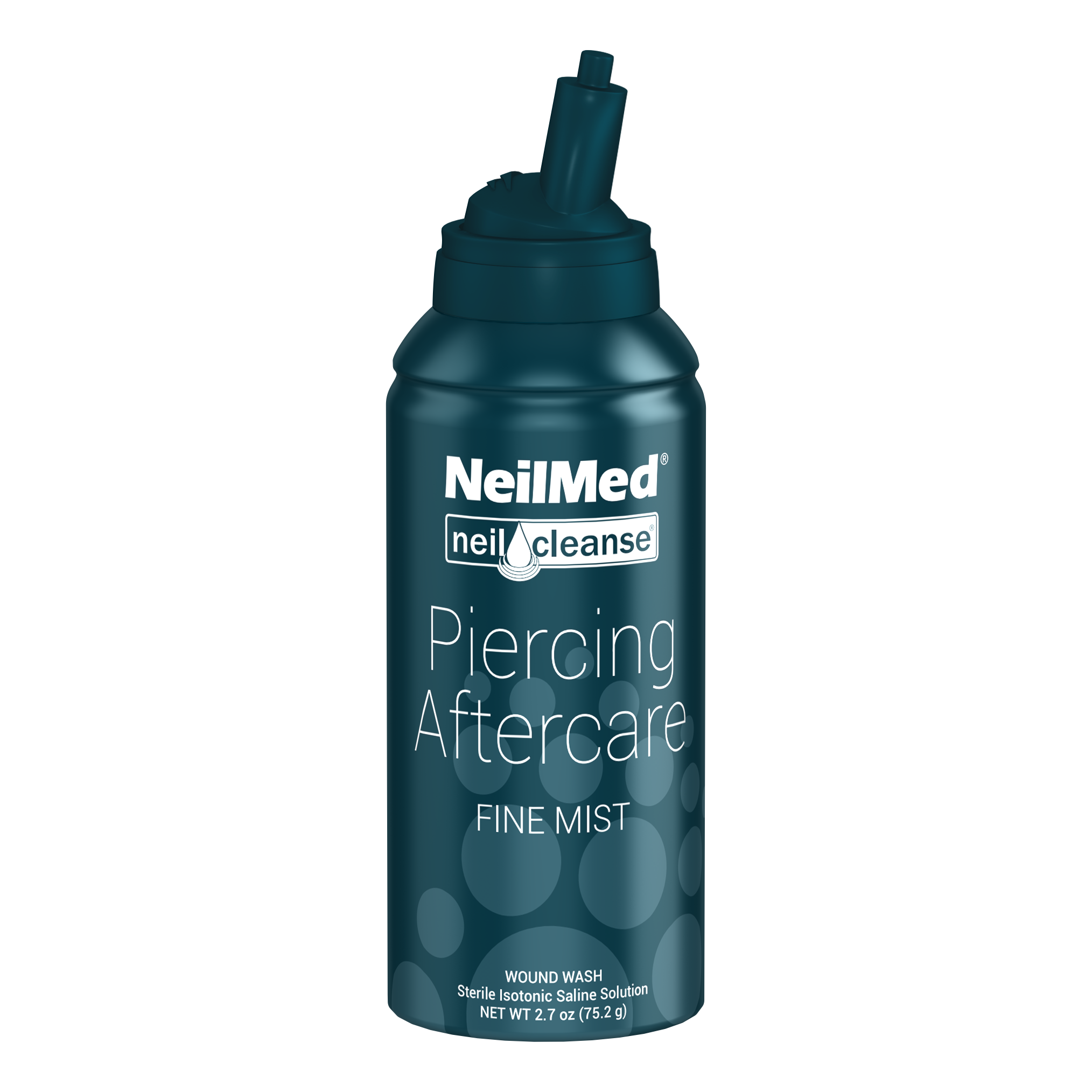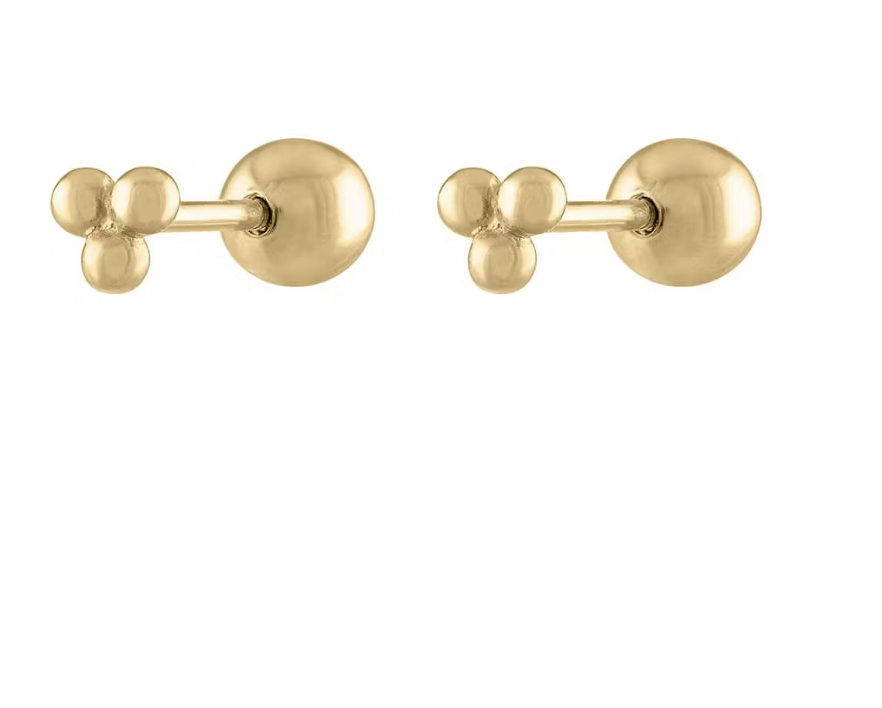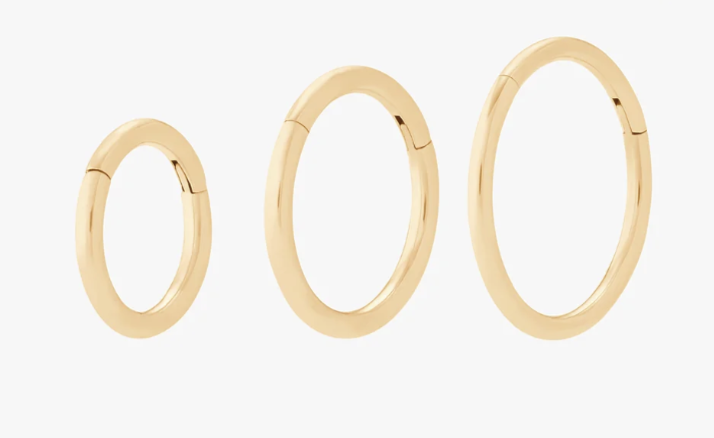A Definitive Guide to Conch Piercings
Everything you need to know about caring for your new earlobe hole.
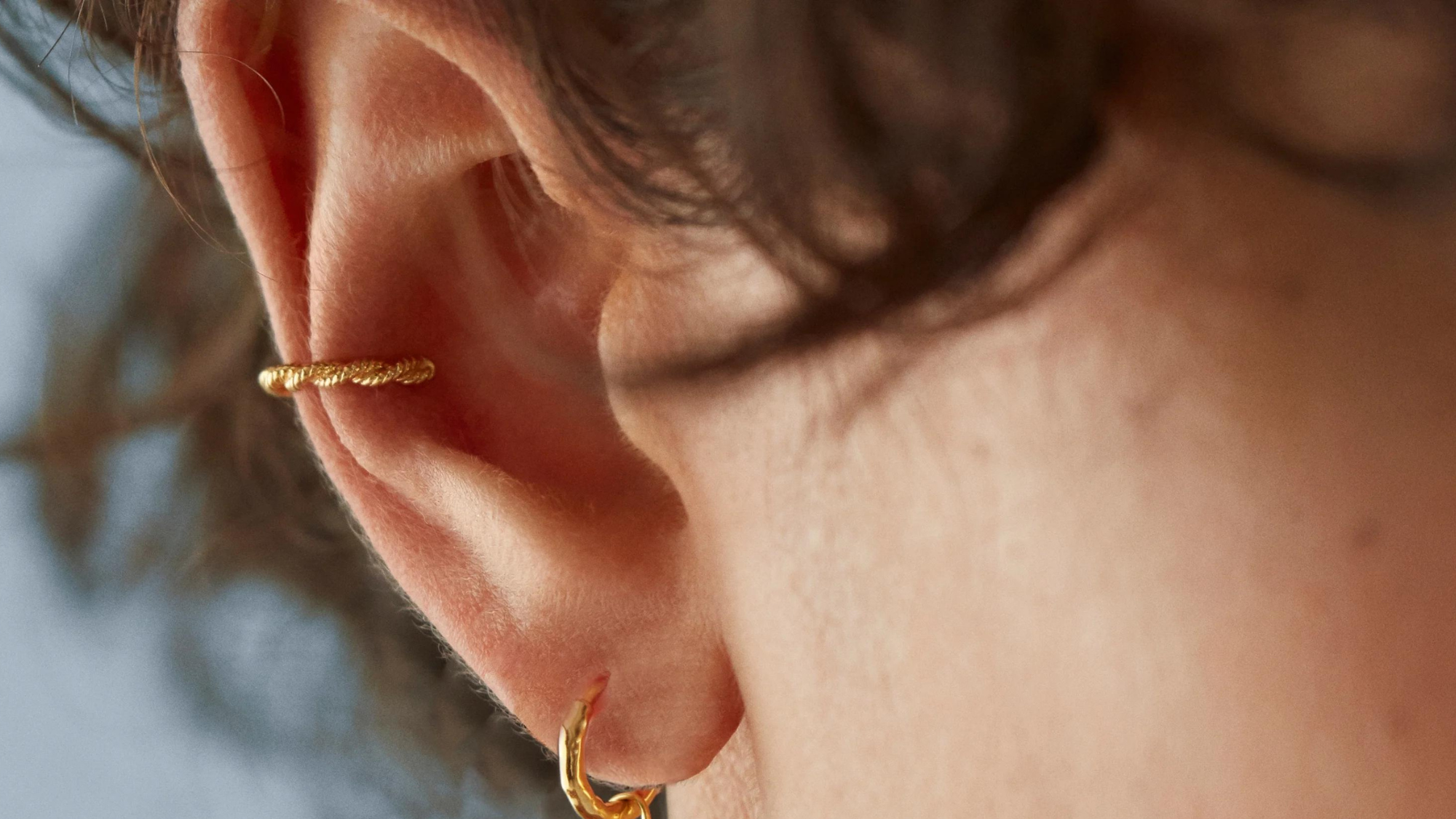
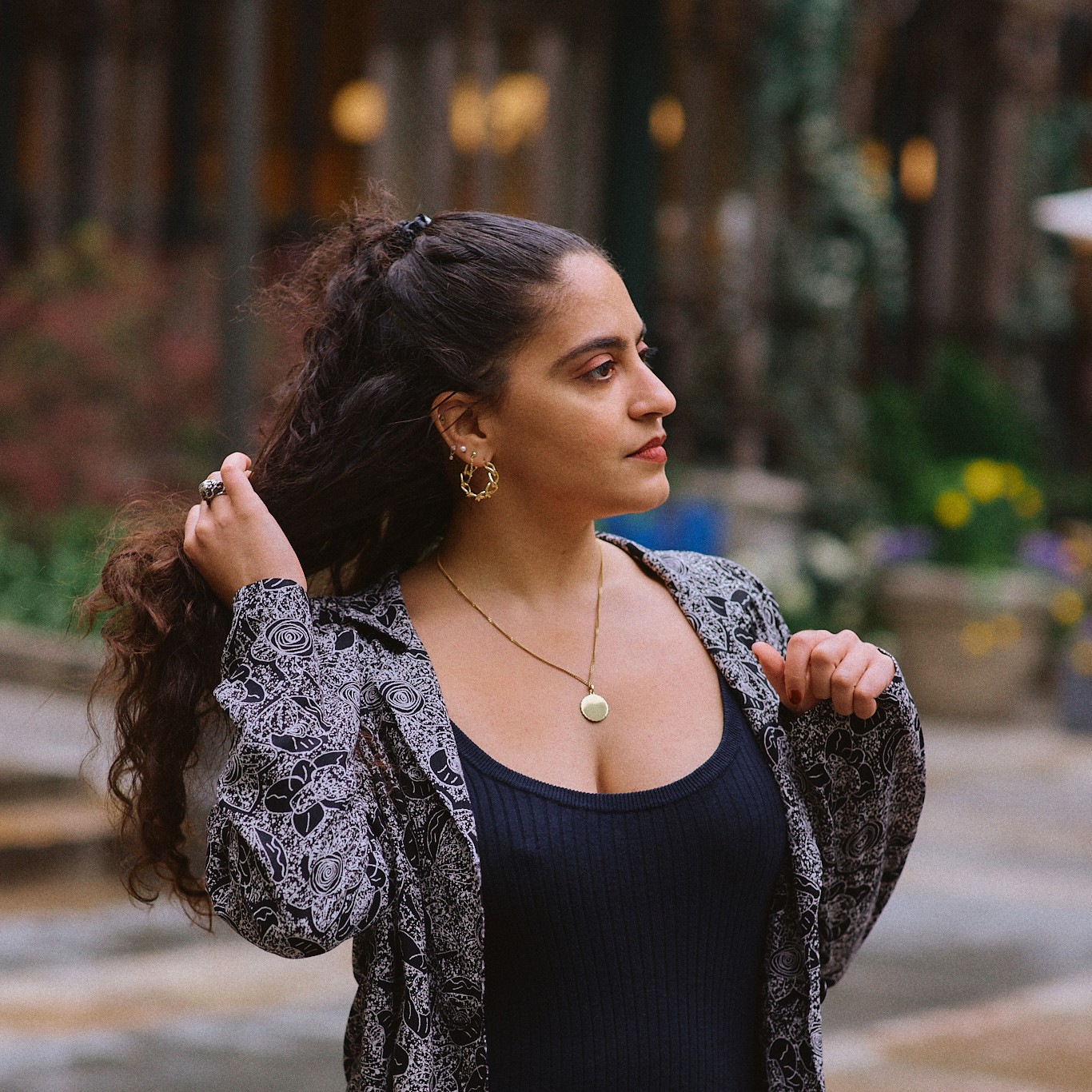
I have quite an extensive piercing collection. I have everyday hoop earrings for my lobes and a few cartilage piercings that I accessorize with studs, so I often stack my earrings to upgrade my look from basic to edgy. And lately, I've considered getting a conch piercing to round out my collection.
"The conch refers to the center 'bowl' of the ear," explains Sarah Lacy, a registered nurse, and Associate Director of Piercing Research and Innovation at ear piercing studio Rowan. "Like the helix, this part of the ear comprises cartilage."
While piercing this area opens up a wide world of earring possibilities, it is also more sensitive and takes longer to heal than a run-of-the-mill lobe piercing. I spoke to Lacy and cosmetic dermatologist Dr. Kenneth Mark about what to expect when getting a conch piercing, how to avoid irritation, and yes, if the piercing is painful.
What Is a Conch Piercing?
As Lacy mentioned, the conch is the inner "bowl" of the ear. Therefore, augmenting your earscape with a conch piercing creates a more balanced look that includes not only the outer sections of the ear (like the lobes and cartilage) but also the inner part.
However, the conch is made of cartilage, which is thicker to pierce than the fleshy skin of the lobe. The conch area is also prone to irritation for those who consistently wear earbuds, and it garners a higher volume of earwax. These circumstances make aftercare particularly important when you're getting your conch pierced. But rest assured, when you're flaunting your gorgeous collection of ear jewelry, it'll feel worth it.
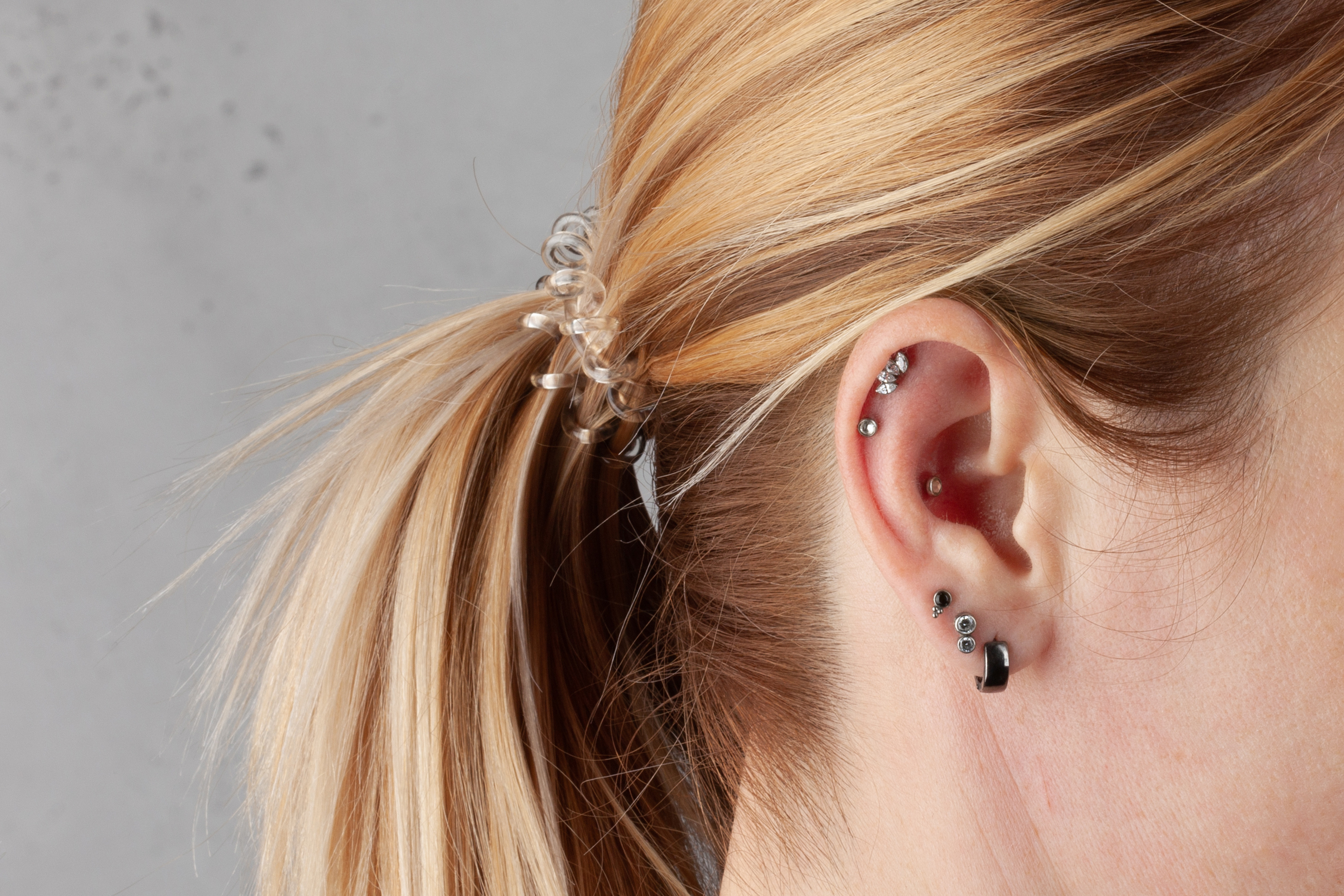
Multiple ear piercings are fun, but there's much to consider before getting it done.
What to Expect During a Conch Piercing
Whenever you get a piercing, you should be aware that you will feel a pinch. However, if you already have a piercing or two (or three or four), you may be better prepared for the conch than you think. "There is a misconception that the conch is more painful than other areas of the ear," says Lacy. "The cartilage of the conch is easy to pierce, and the discomfort is minimal." She admits, however, that physical pain is relative.
How to Care for a Conch Piercing
The skin around a piercing is sensitive for the first year, so treat it as such. Lacy recommends avoiding touching or sleeping on your piercing, which might cause discomfort. You'll also want to wear over-the-ear headphones, as added friction can lead to a hard bump or keloid scar. "If you must wear earbuds, make sure they don't touch your piercing, and clean them before each use to keep infection-causing bacteria away from your piercings," she explains.
Stay In The Know
Get exclusive access to fashion and beauty trends, hot-off-the-press celebrity news, and more.
The most significant factor when caring for a conch piercing is to keep the area clean. Personally speaking, I have four cartilage piercings, and I noticed that the ones I took good care of and cleaned religiously healed much faster. Lacy and Dr. Mark recommend cleaning the area twice a day with clean hands, avoiding ointments, creams, alcohol-based products, or hydrogen peroxide. The latter two, in particular, can over-dry skin and kill new cell growth, inhibiting healing. Be especially mindful to clean the piercing area after working out, swimming, showering, or sweating in order to prevent bacterial growth.
How to Prevent a Conch Piercing Infection
Dr. Mark recommends applying an antibiotic ointment twice daily for the first few weeks. Then, he says the best course of action is to clean the area using a piercing cleaning solution or soap and water. If you use a lot of hair products, be sure those don't contaminate the piercing area. "Keep the area clean and don't remove the piercing until it's completely healed," he adds.
Finally, minimize excess moisture in the area around your piercing, which can support infection-causing bacteria. Avoid swimming, whether in a pool or at the beach, or prolonged baths for the first few weeks after you get your conch piercing.
If the pierced area becomes severely inflamed, unusually painful, or infected, he suggests seeing your doctor, who can prescribe you a topical steroid cream.

Actress Zoe Kravitz is known to accessorize her look with conch piercings.
How Long Does It Take for Conch Piercings to Heal?
Unlike lobe piercings, which take four to six months to heal, cartilage piercings, including those on the conch, require more care. "You can expect about a year for your conch piercing to heal," Lacy explains. "Some may experience faster healing, and others may take longer, and that’s perfectly okay. If you’re concerned that your piercing is not healing well, you can always check in with your piercer and your medical provider for guidance."
What's the Best Jewelry for a Conch Piercing?
Make sure you select hypoallergenic jewelry with a flat or tiny round backing that's made for the conch and cartilage. Lacy suggests avoiding hoops until after your piercing has healed fully, as this style may not be comfortable before then.
Meet the Experts

Sarah Lacy is the Associate Director of Piercing Research and Innovation at Rowan, a piercing studio with locations across the United States. She formerly sat as Chairman of Rowan's Medical Advisory Board. A registered nurse with a decade of experience, she is now based in New York.

Dr. Kenneth Mark is a cosmetic dermatologist. He spent over 20 years as a clinical professor and now runs his own practice, which has locations in New York City, the Hamptons, and Aspen.

Gabrielle Ulubay is a Beauty Writer at Marie Claire. She has also written about sexual wellness, politics, culture, and fashion at Marie Claire and at publications including The New York Times, HuffPost Personal, Bustle, Alma, Muskrat Magazine, O'Bheal, and elsewhere. Her personal essay in The New York Times' Modern Love column kickstarted her professional writing career in 2018, and that piece has since been printed in the 2019 revised edition of the Modern Love book. Having studied history, international relations, and film, she has made films on politics and gender equity in addition to writing about cinema for Film Ireland, University College Cork, and on her personal blog, gabrielleulubay.medium.com. Before working with Marie Claire, Gabrielle worked in local government, higher education, and sales, and has resided in four countries and counting. She has worked extensively in the e-commerce and sales spaces since 2020, and spent two years at Drizly, where she developed an expertise in finding the best, highest quality goods and experiences money can buy.
Deeply political, she believes that skincare, haircare, and sexual wellness are central tenets to one's overall health and fights for them to be taken seriously, especially for people of color. She also loves studying makeup as a means of artistic expression, drawing on her experience as an artist in her analysis of beauty trends. She's based in New York City, where she can be found watching movies or running her art business when she isn't writing. Find her on Twitter at @GabrielleUlubay or on Instagram at @gabrielle.ulubay, or follow her art at @suburban.graffiti.art
